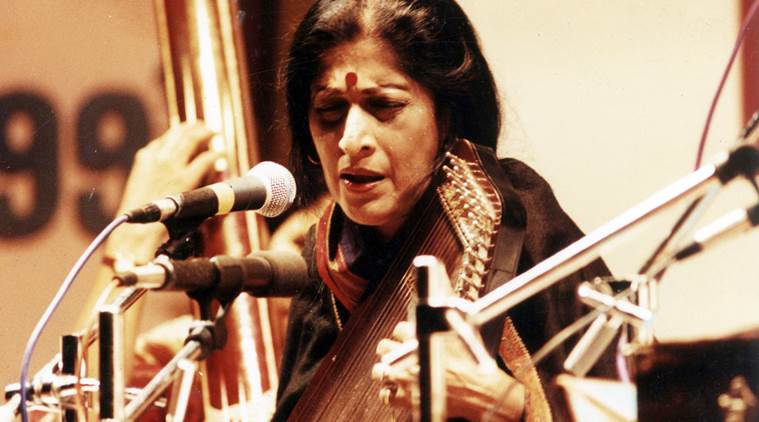Khayal: The Evolving Art of Indian Classical Music

Khayal, meaning “imagination” in Arabic, is one of the most prominent and dynamic forms of Hindustani classical music. Known for its expressive and improvisational nature, Khayal has evolved over centuries to become a versatile and sophisticated genre, allowing artists to explore a wide range of emotions and musical ideas. This article delves into the origins, characteristics, structure, and contemporary relevance of Khayal, highlighting its role in the rich tapestry of Indian classical music.
Historical Background
Origins
The origins of Khayal can be traced back to the 13th century, during the rule of the Delhi Sultanate. It is believed that the legendary musician Amir Khusrau, a court poet and musician, played a significant role in the early development of Khayal. Khusrau’s innovative spirit and his blending of Persian and Indian musical traditions laid the groundwork for Khayal’s emergence.
Evolution
Khayal continued to evolve through the Mughal era, gaining prominence in the courts of various rulers. By the 18th century, Khayal had firmly established itself as a distinct genre, thanks to the contributions of prominent musicians like Niyamat Khan (Sadarang) and Firoz Khan (Adarang). These musicians composed numerous Khayal bandishes (compositions) that are still performed today. The gharana system, or schools of music, further refined Khayal, each imparting its own stylistic nuances and interpretative approaches.
Core Characteristics
Emphasis on Imagination
True to its name, Khayal emphasizes creativity and imagination. Unlike the more rigidly structured Dhrupad, Khayal offers musicians considerable freedom to improvise and explore within the framework of the raga (melodic structure) and tala (rhythmic cycle). This allows for a wide range of emotional expression and artistic interpretation.
Vocal and Instrumental Forms
While primarily a vocal genre, Khayal has also significantly influenced instrumental music. Instruments like the sitar, sarod, and violin often mimic the vocal techniques of Khayal, including intricate ornamentation (alankars) and elaborate improvisational passages (taans).
Structure of a Khayal Performance
A typical Khayal performance follows a well-defined structure, allowing for both pre-composed and improvised elements. The performance generally comprises the following sections:
Bada Khayal (Vilambit)
The performance usually begins with Bada Khayal, a slow and expansive rendition of the raga. The singer introduces the raga through a meditative alap (free-form introduction), gradually unfolding its melodic contours. This is followed by the bandish, a pre-composed piece set to a slow tempo (vilambit laya). The singer explores the raga with elaborate improvisations, including meends (glides), gamaks (oscillations), and taans (rapid passages).
Chhota Khayal (Drut)
After the Bada Khayal, the tempo increases with the Chhota Khayal, a faster rendition of the raga. This section also begins with a bandish, but it is set to a fast tempo (drut laya). The singer continues to improvise, showcasing their technical prowess and creativity through rapid taans and intricate rhythmic variations.
Role of Accompaniment
Tabla
The tabla, a pair of hand drums, is the primary percussion instrument in a Khayal performance. It provides the rhythmic framework (tala) and interacts dynamically with the singer, enhancing the overall musical experience. The tabla player often engages in complex rhythmic exchanges (sawal-jawab) with the singer, adding to the improvisational excitement.
Harmonium and Sarangi
The harmonium and sarangi are commonly used as melodic accompaniments in Khayal. The harmonium provides a harmonic backdrop, while the sarangi, a bowed string instrument, closely follows the vocalist, mimicking their phrases and adding depth to the performance.
Gharanas and Their Influence
The gharana system has played a crucial role in shaping the diverse styles of Khayal. Each gharana has its own unique approach to raga interpretation, ornamentation, and rhythmic treatment. Some of the prominent Khayal gharanas include:
Gwalior Gharana
Known as the oldest Khayal gharana, the Gwalior Gharana emphasizes clarity of notes, systematic raga development, and extensive use of taans. Musicians from this gharana, such as Vishnu Digambar Paluskar and Krishnarao Shankar Pandit, have significantly contributed to the spread and popularization of Khayal.
Kirana Gharana
The Kirana Gharana is renowned for its slow, meditative alap and emphasis on the purity of swaras (notes). Founded by Abdul Karim Khan, this gharana focuses on the emotional and spiritual expression of ragas. Bhimsen Joshi and Prabha Atre are among its illustrious exponents.
Agra Gharana
With roots in the Dhrupad tradition, the Agra Gharana combines robust and powerful singing with intricate rhythmic play. Founded by Ghagghe Khudabaksh, this gharana is known for its emphasis on the lower octave and a rich repertoire of rare ragas. Faiyaz Khan and Dinkar Kaikini are notable musicians from this gharana.
Patiala Gharana
The Patiala Gharana is characterized by its elaborate and expansive taans, intricate ornamentation, and robust voice quality. Founded by Fateh Ali Khan and Ali Baksh, it has been carried forward by legendary singers like Bade Ghulam Ali Khan and Prasun Banerjee.
Conclusion
Khayal, with its rich history, intricate structure, and emphasis on imagination, stands as a testament to the evolving art of Indian classical music. Its ability to blend tradition with innovation, while maintaining a profound emotional and spiritual depth, has made it a cherished genre among musicians and listeners alike. As Khayal continues to inspire and captivate audiences globally, it reaffirms its place as a dynamic and enduring expression of India’s musical heritage.





